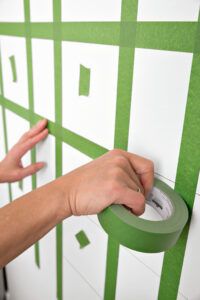Project details
Skill
Cost
Estimated Time
For this project, we’re teaming up with our friends at Sherwin-Williams® to create an accent wall with not one, but three colors arranged in a fun geometric pattern.
To choose the colors, I tested out the match a photo feature of the ColorSnap® visualizer app by Sherwin-Williams. It allows me select a photo on my phone and shows me the matching Sherwin-Williams paint color. For this pattern, I’m using a white base and two blue tones.
Because this is an entryway, and the walls get plenty of wear, my local Sherwin-Williams Paint Expert suggested using Emerald® Interior Paint, which is durable and washable, and perfect for high traffic areas.
For this project I also picked up paint sticks, a paint tray and liners, a 2 1⁄2-inch angled tip synthetic paint brush to cut-in along the edges, a roller frame fitted with a 3/8-inch nap roller cover, a drop cloth, painter’s tape, spackle, a sanding sponge, tape measure, and a board to use as a straight edge.
Steps for painting a geometric accent wall:
Step 1: Choose the Colors
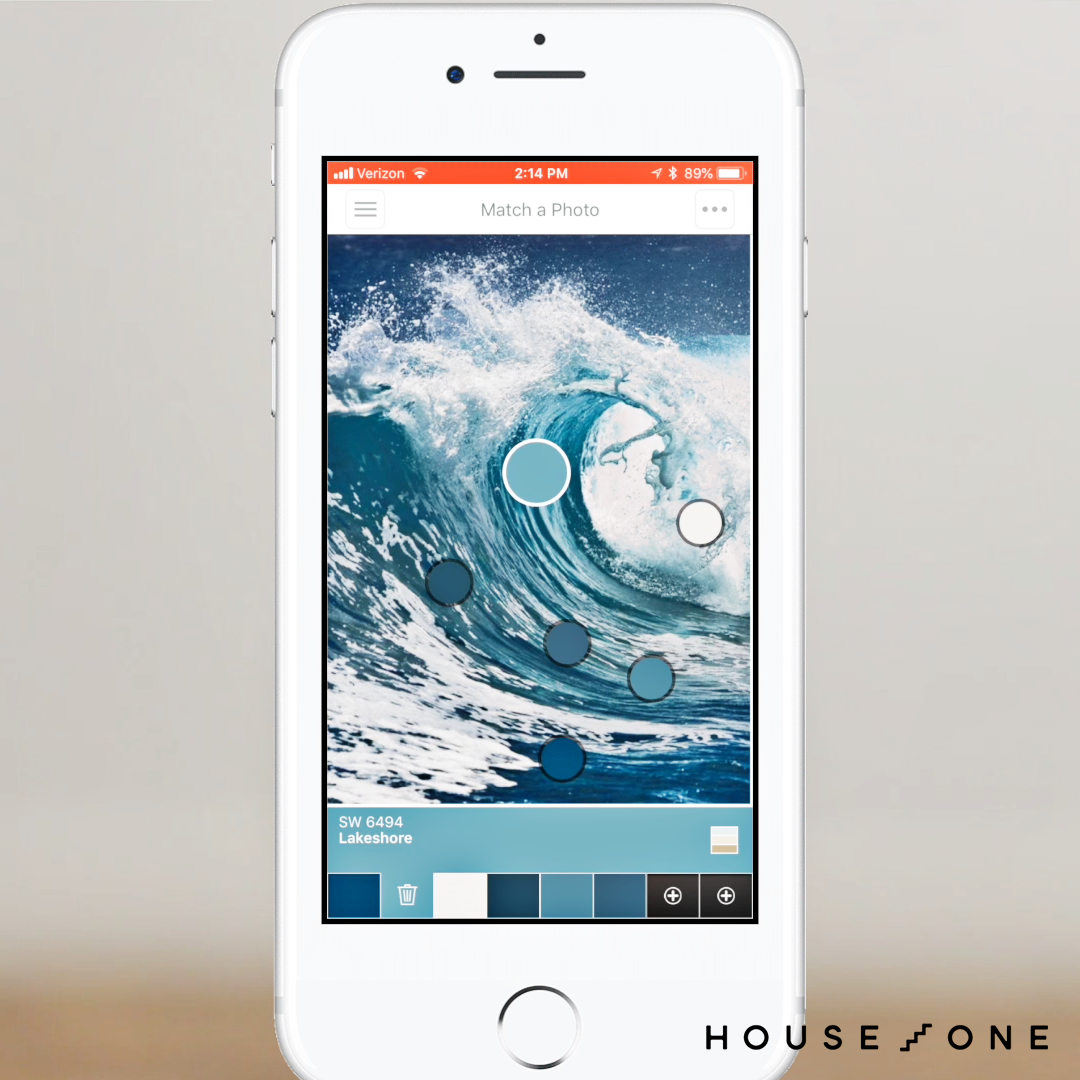
Select the Match-a-Photo feature in the ColorSnap® visualizer app by Sherwin-Williams. Select (or snap) your inspiration photo. Tap the colors found in the image to preview the paint color right on the screen.
Step 2: Prep the Wall
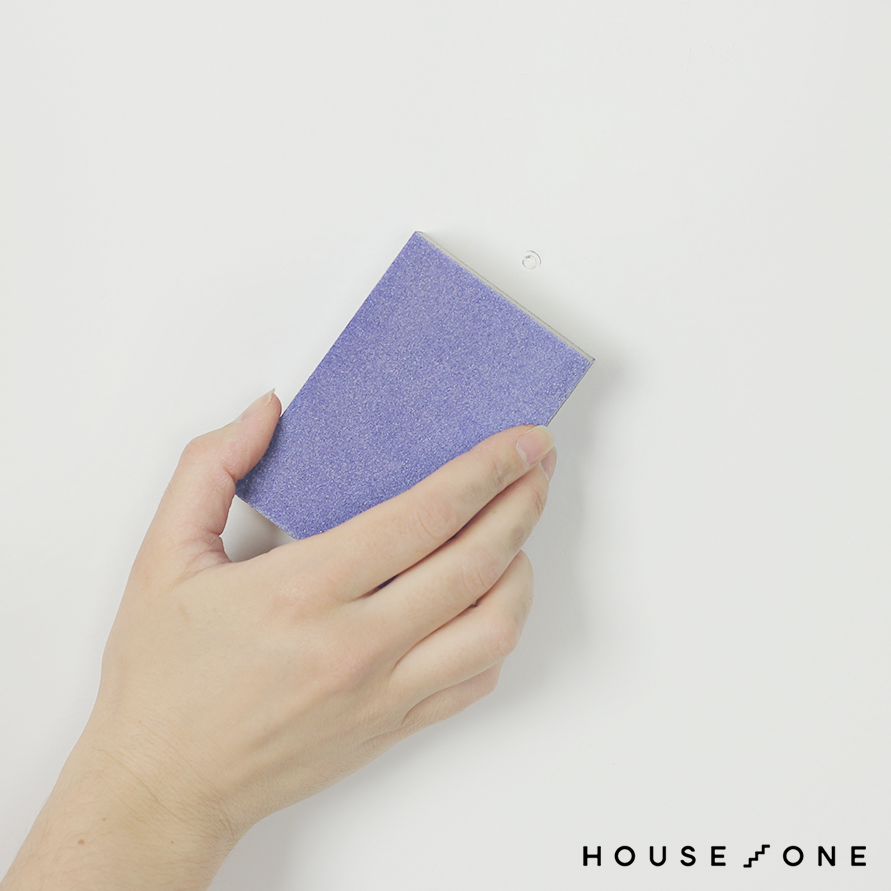
To prep the wall, first wash the wall to make sure all the grease, dirt and grime is removed. Fill nail holes with spackle, sand the area smooth, and wipe the dust away from the wall. Tape off the baseboard and ceiling with painter’s tape.
Step 3: Apply the Base Color (optional)
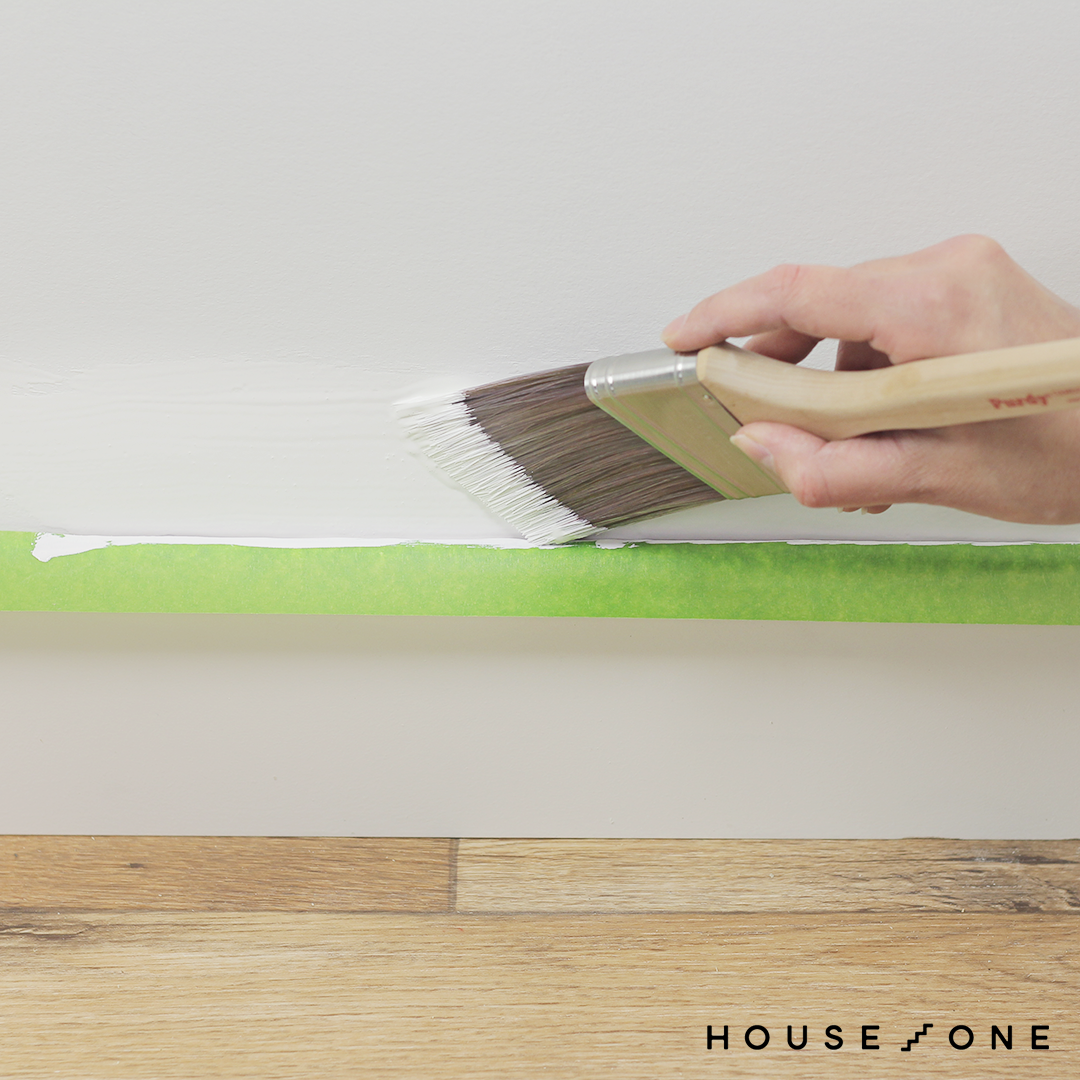
If repainting the wall, fill the paint tray with the base color. We’re using a cool white color called Pure White SW 7005. Using a brush, cut in along the baseboard and ceiling. Apply the paint to the wall using a roller fitted with a 3/8-inch nap roller cover—working in overlapping W-patterns.
Step 4: Mark the Pattern
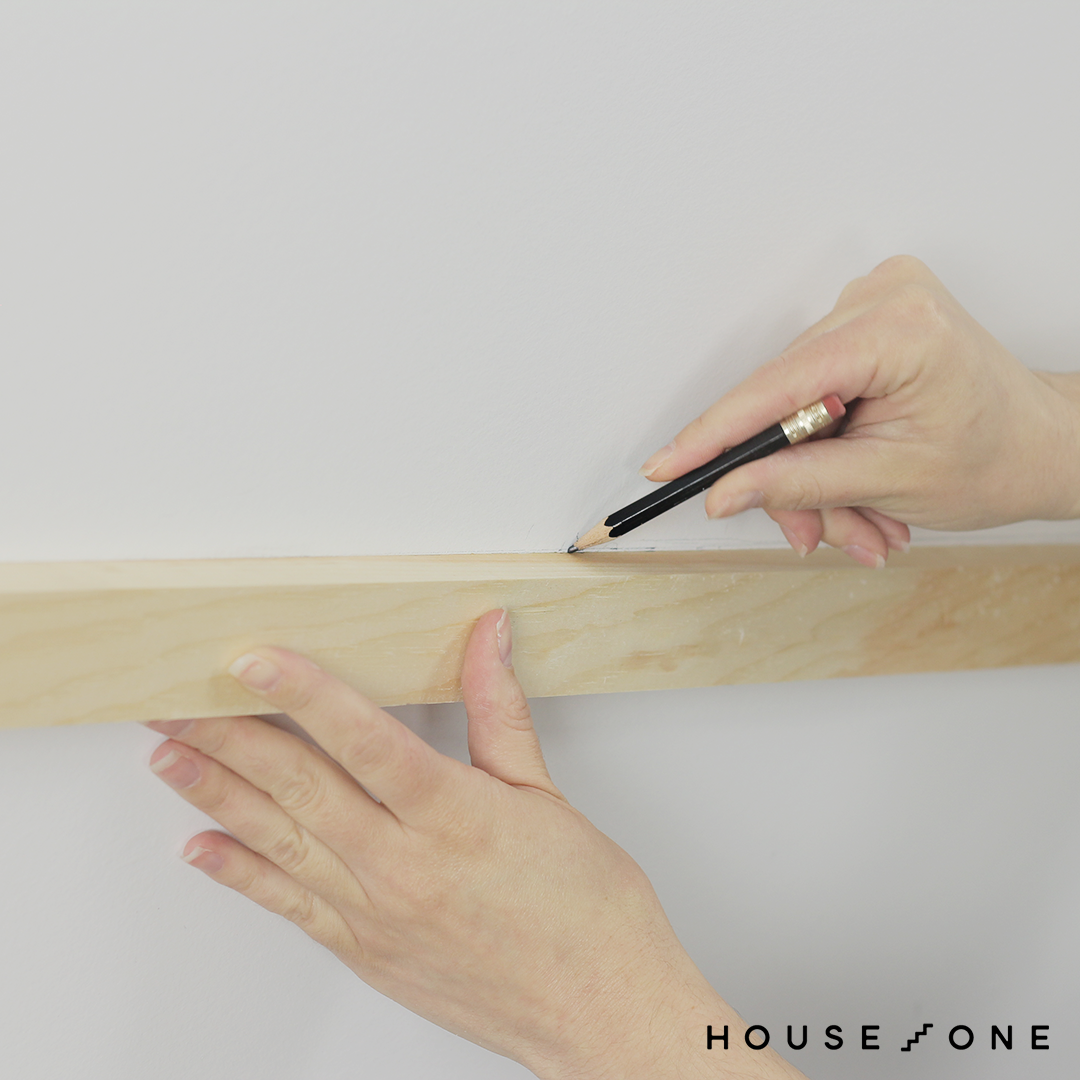
Once the paint dries, mark the height of the first section on the left edge of the wall—our mark is at 30-inches-high. Use a straightedge to draw an angled line from the mark on the left side of the wall to the bottom right corner of the wall. Mark a second line that runs from the center of the first line to the upper-right corner of the wall.
Step 5: Apply the Painter’s Tape
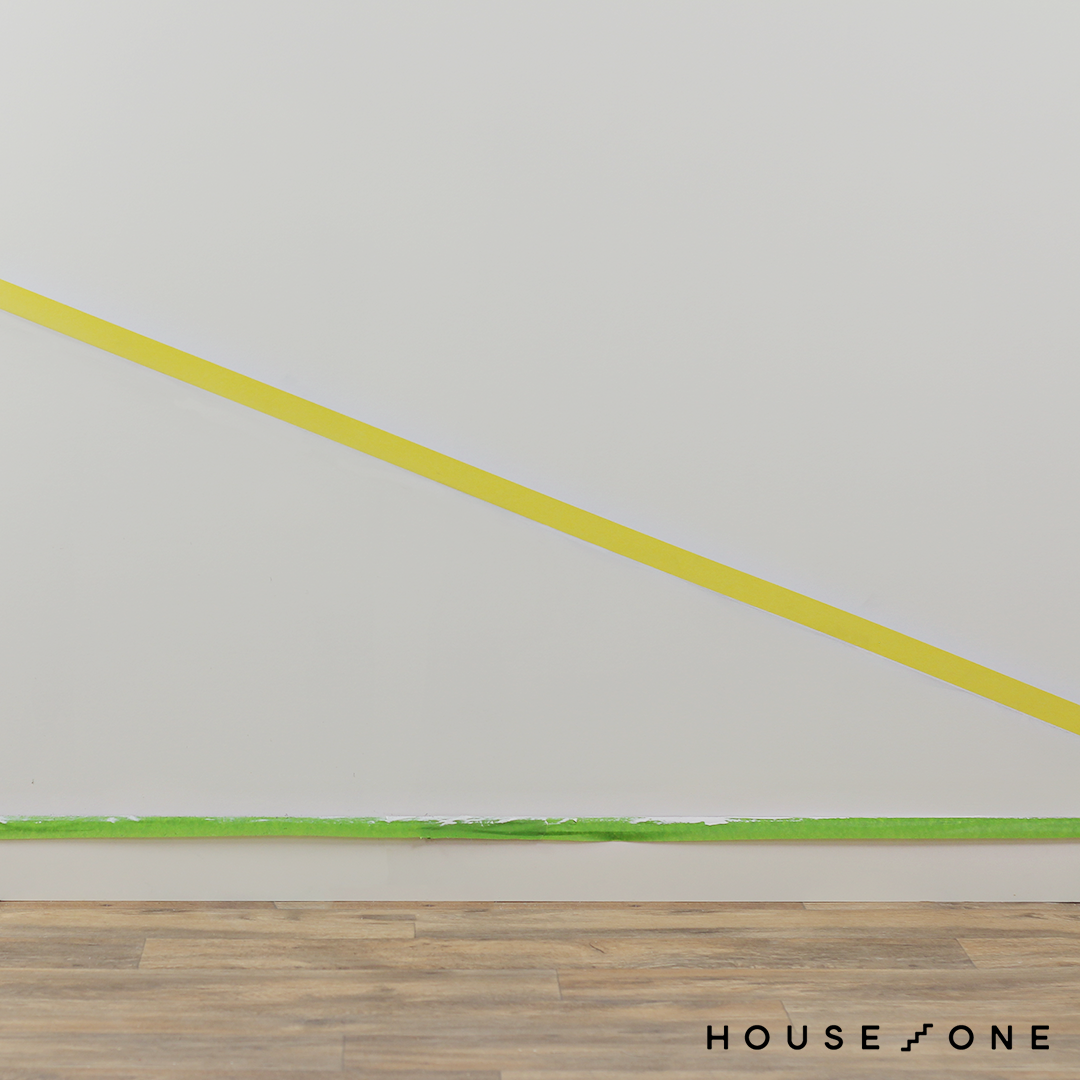
Apply painter’s tape for delicate surfaces above the horizontal line marked on the wall. Apply painter’s tape for multi-surfaces along the baseboard.
Step 6: Prep the Paint
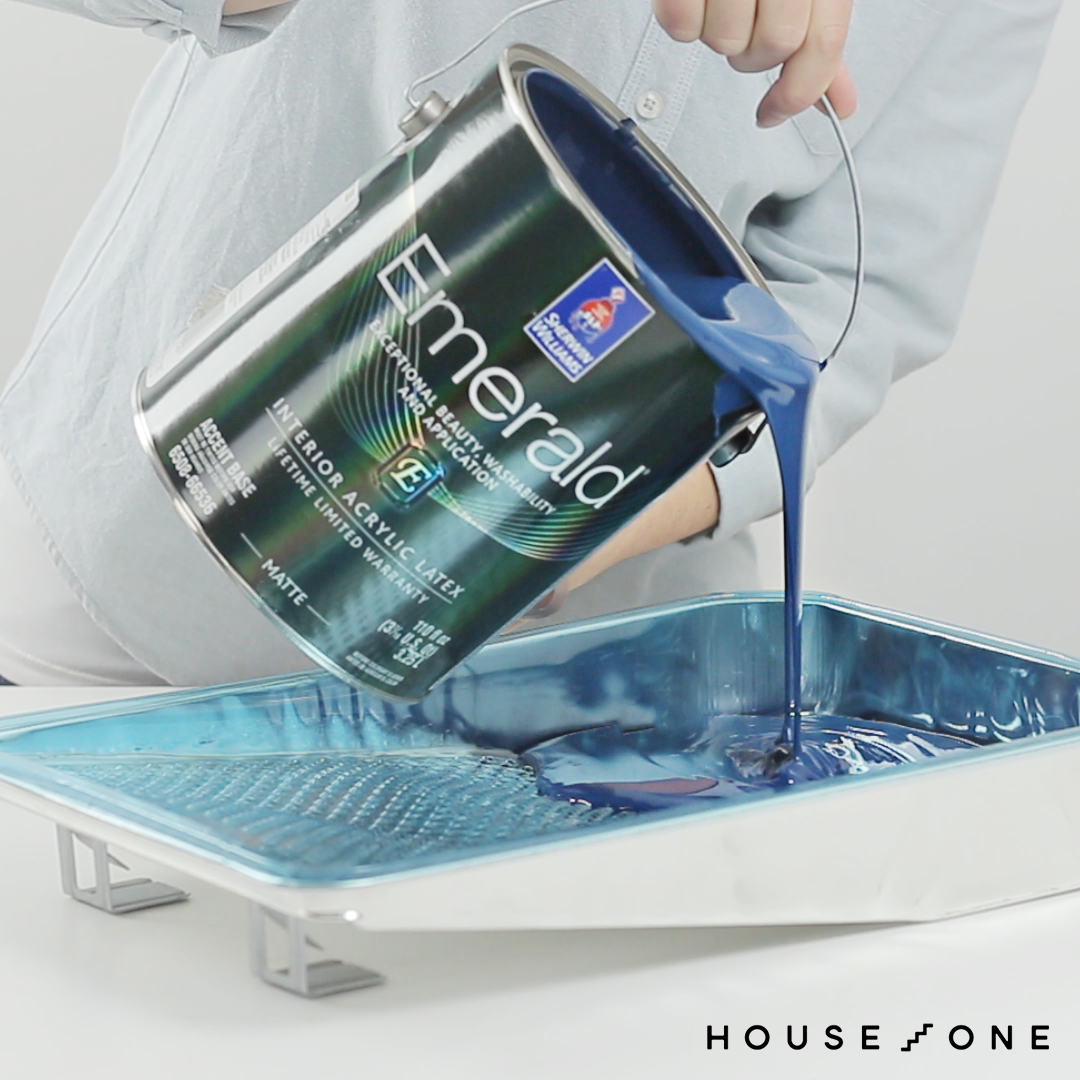
Pour the color of the first section into the tray. We’re using a dark blue color called Salty Dog SW 9177 by Sherwin-Williams to coat the bottom section of the wall.
Step 7: Paint the First Section
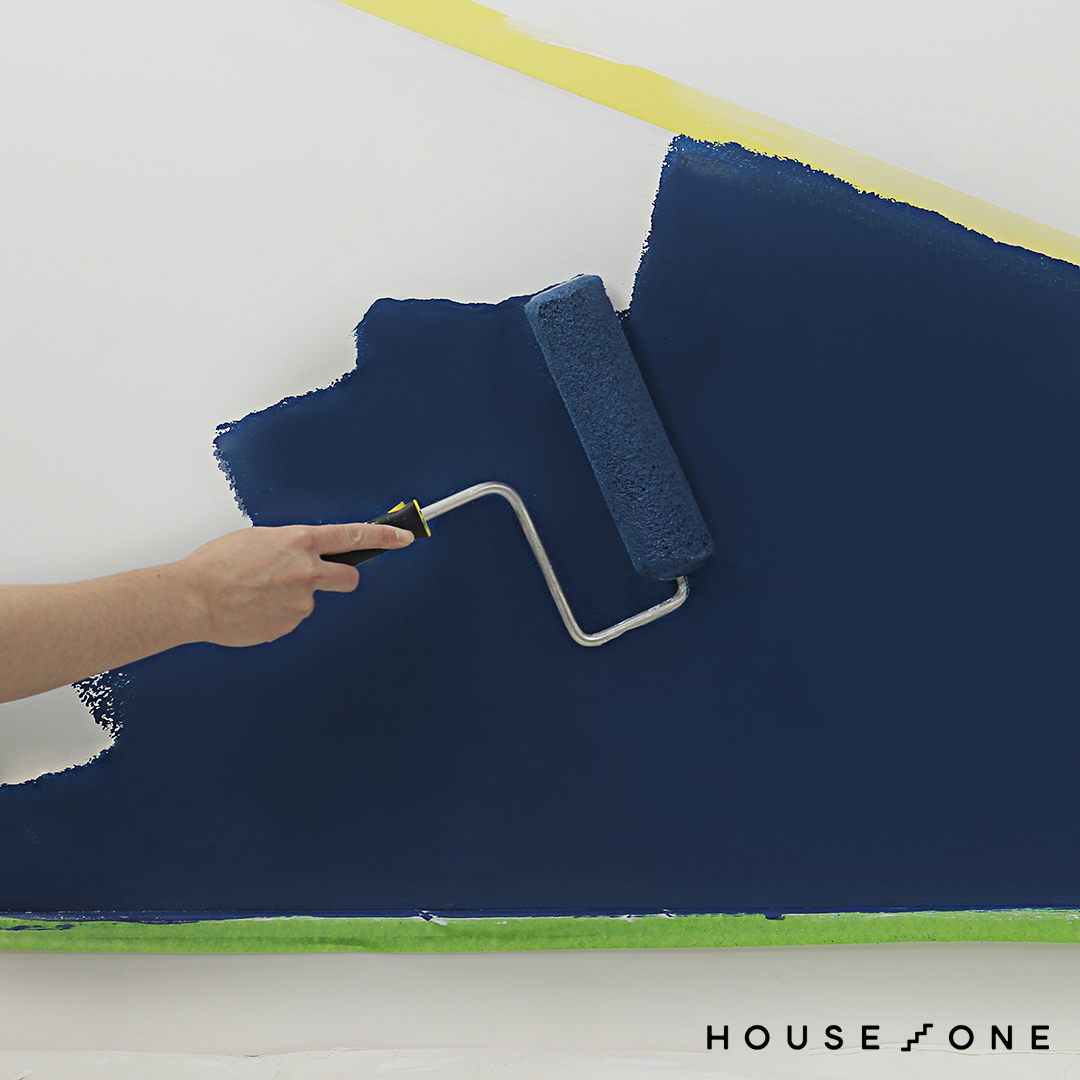
Using a roller fitted with a 3/8-inch nap roller cover and a 2 1/2-inch angled tip paintbrush, apply a coat of paint between the baseboard and the tape. Let dry and apply a second coat is necessary. Remove the painter’s tape.
Step 8: Tape Off the Second Section
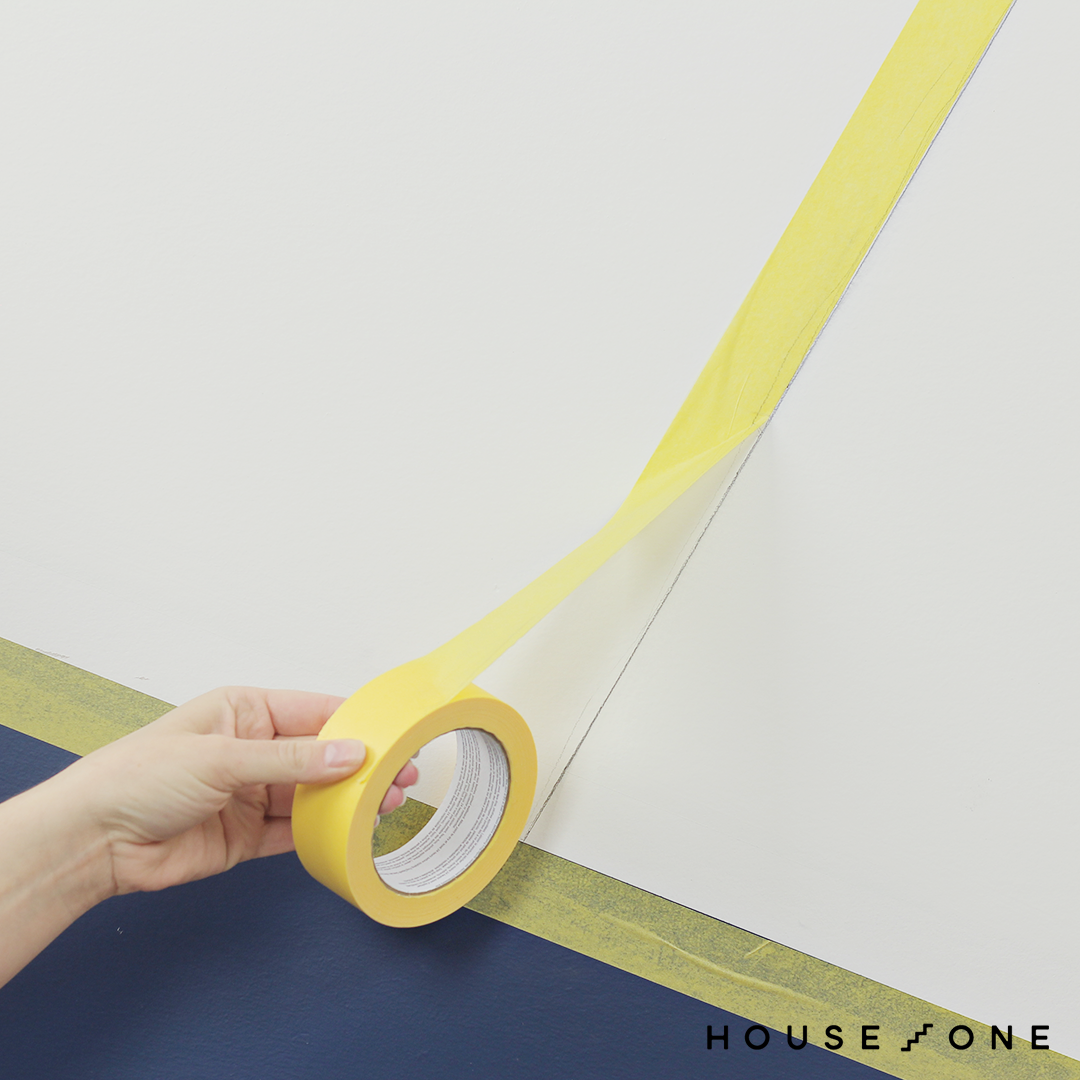
Apply the painter’s tape for delicate surfaces along the edges of the first painted section (covering the first color). Additionally, apply painter’s tape for multi-surfaces along the left side of the vertical line, the ceiling and any adjoining walls.
Step 9: Paint the Second Section
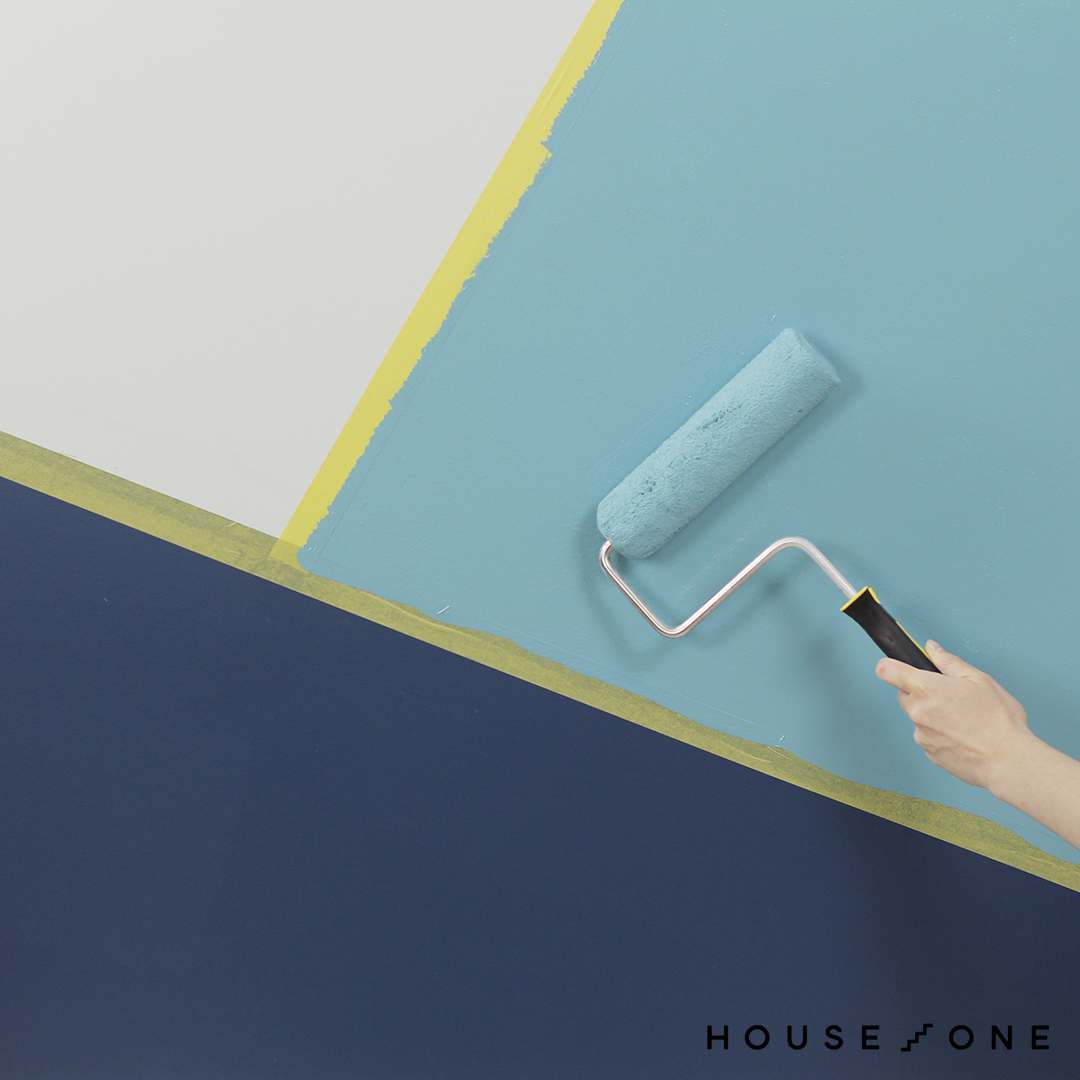
Using a roller fitted with a 3/8-inch nap roller cover, fill in the area with the second color. We’re using a lighter blue color called Byte Blue SW 6498 by Sherwin-Williams.
Step 10: Remove the Painter’s Tape
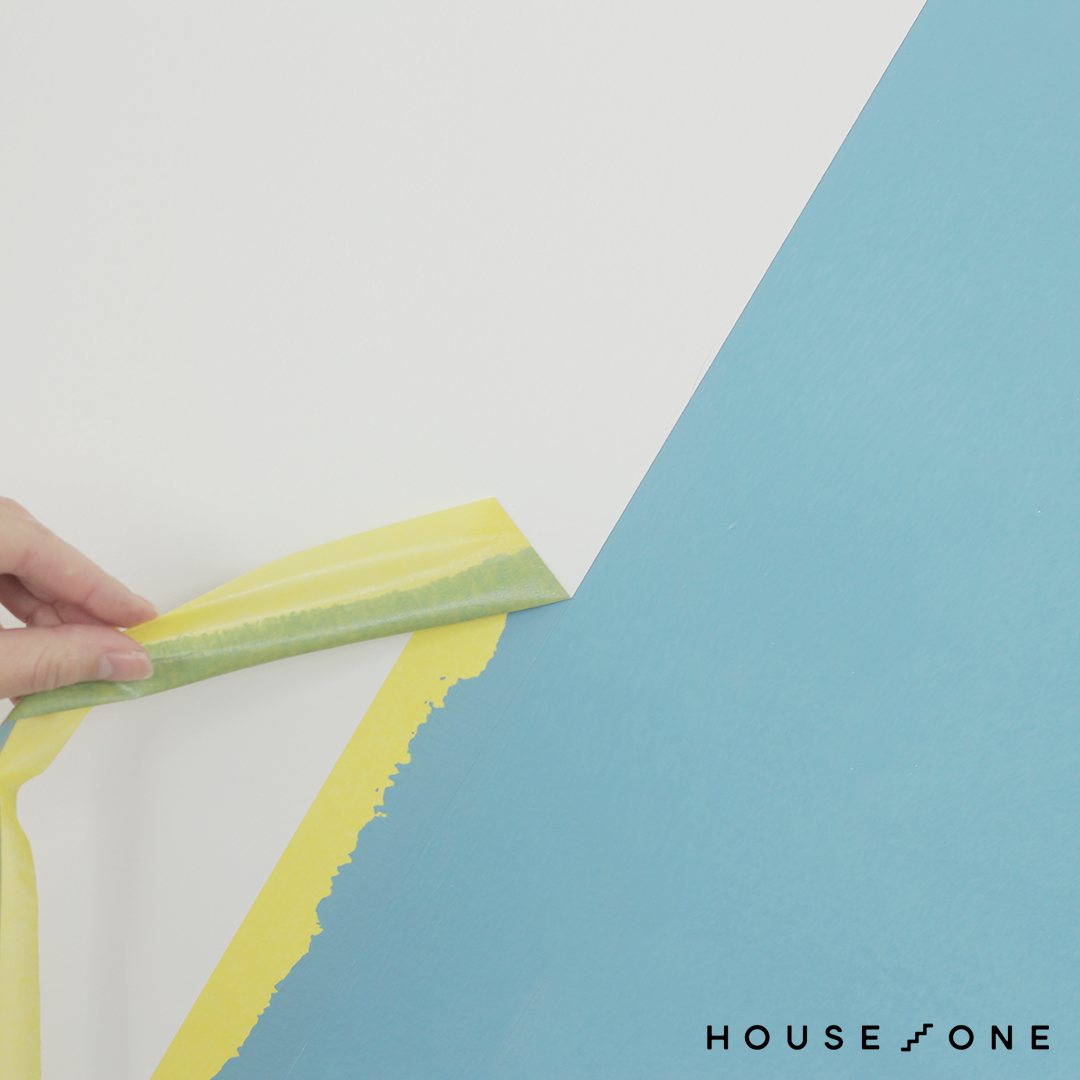
Let the paint dry, and then apply a second coat is necessary. Remove the painters tape from the vertical line.
Step 11: Finish Removing the Painter’s Tape
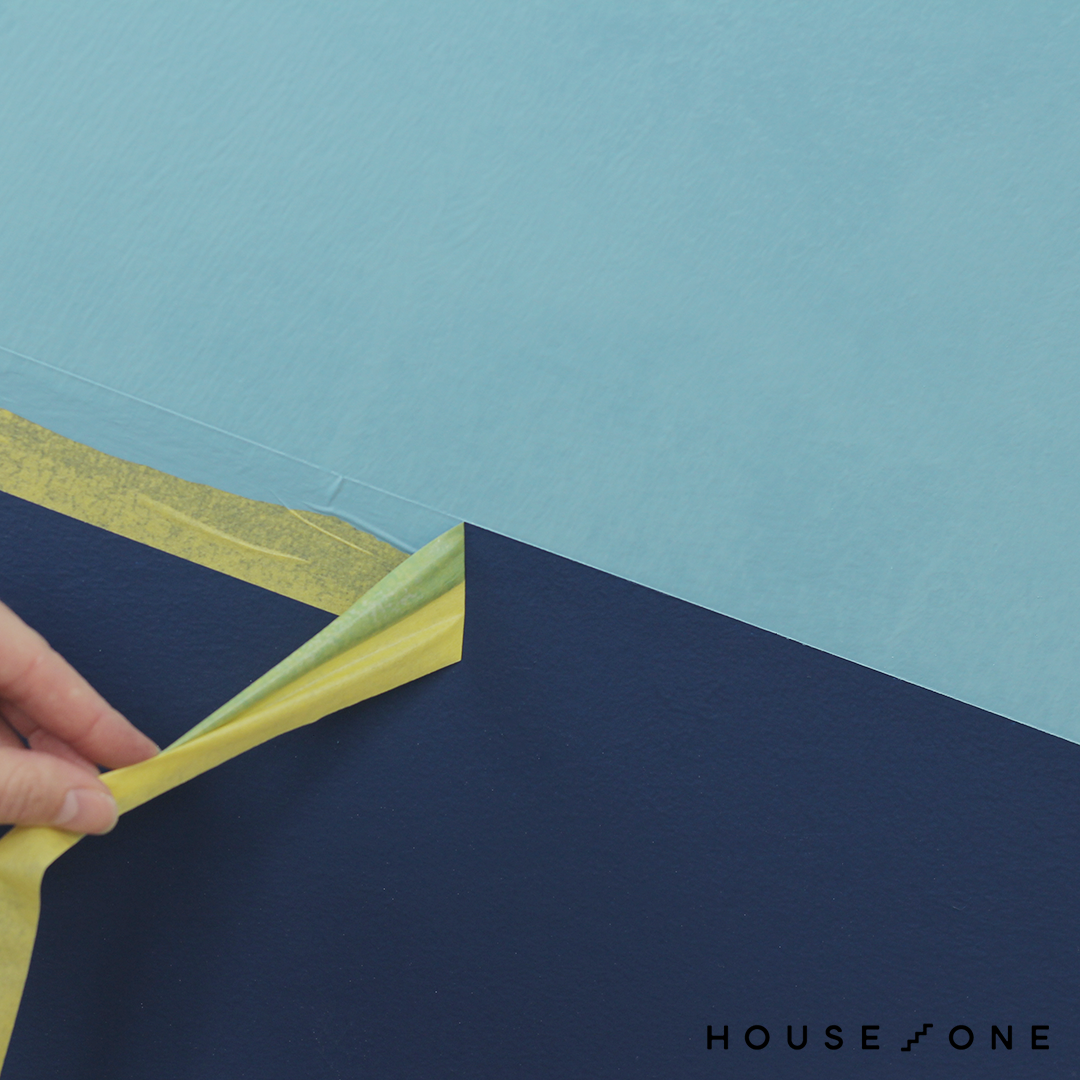
Finish the wall by removing the painter’s tape from the horizontal line and the surrounding walls and ceiling.
Materials:
- Sherwin-Williams Emerald® Interior Acrylic Latex Paint
- 1 x 2 Board or Straightedge
- Paint Cup
- Paint Cup Liners
- Paint Tray and Liners
- Spackle



